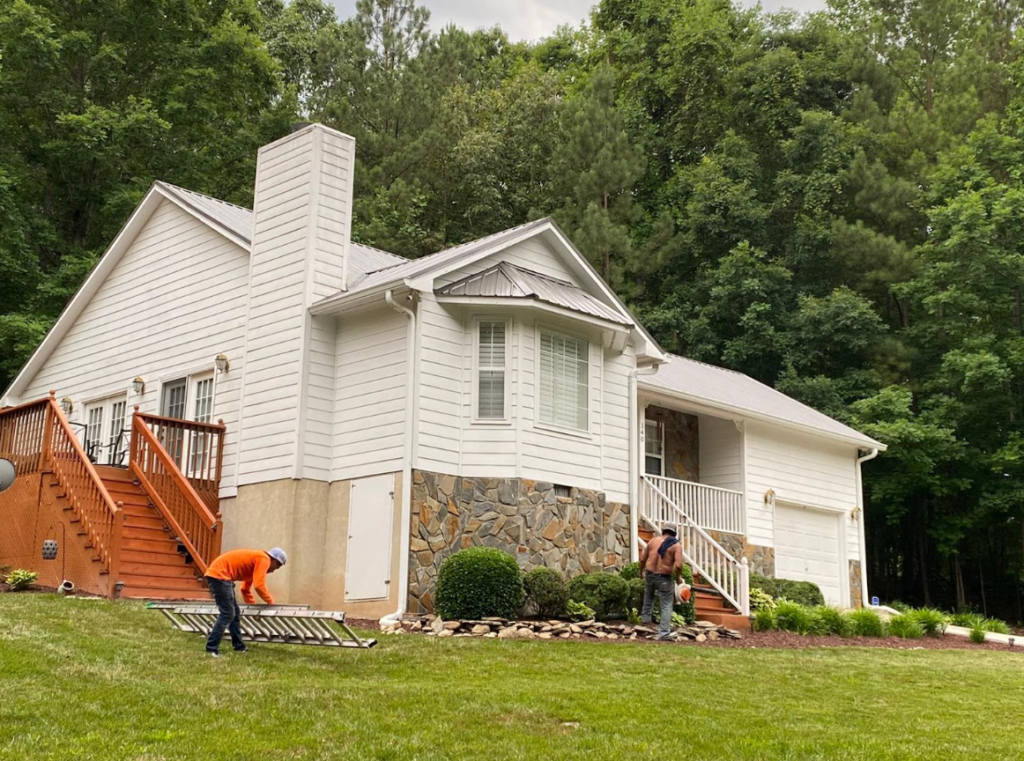Metal roofing has long been a staple in the construction industry, valued for its durability, energy efficiency, and aesthetic appeal. As we look to the future, metal roofing continues to evolve, with new technologies and trends shaping the way we think about this essential building material. In this blog post, we’ll explore the future of metal roofing, including emerging trends and predictions that are likely to impact the industry in the coming years.
1. Sustainable and Eco-Friendly Roofing Solutions
Sustainability is no longer a buzzword—it’s a necessity. As environmental concerns grow, so does the demand for eco-friendly building materials. Metal roofing is inherently sustainable, often made from recycled materials and fully recyclable at the end of its life. However, the future promises even greater strides in sustainability.
Key Trends:
- Increased use of recycled metals: Manufacturers are expected to increase the percentage of recycled content in metal roofing products, further reducing the carbon footprint.
- Cool roof technology: Reflective coatings and finishes that reduce heat absorption will become more common, helping to lower energy consumption in buildings.
- Integration with renewable energy: Metal roofs are ideal for supporting solar panels, and we can expect to see more systems designed specifically for easy solar integration.
2. Advanced Coatings and Finishes
The appearance and performance of metal roofs are greatly influenced by their coatings and finishes. As technology advances, we can anticipate a new generation of coatings that offer enhanced protection, longer life, and even smart capabilities.
Key Trends:
- Self-healing coatings: Future coatings may be able to repair minor scratches and damage on their own, extending the lifespan of metal roofs.
- Smart coatings: These innovative finishes could respond to environmental changes, such as temperature fluctuations, by adjusting their properties to optimize energy efficiency.
- Expanded color palettes: Homeowners and businesses alike will have access to a broader range of colors and finishes, including options that mimic natural materials like wood or stone.
3. Increased Focus on Energy Efficiency
Energy efficiency remains a top priority in building design, and metal roofing is well-positioned to lead the way. The reflective properties of metal roofs help reduce heat absorption, making them ideal for energy-saving designs. In the future, energy efficiency will be further enhanced by integrating metal roofing with other technologies.
Key Trends:
- Solar-ready metal roofs: More metal roofing systems will be designed with built-in mounts or channels for seamless solar panel integration, making it easier for property owners to adopt renewable energy.
- Thermal insulation improvements: Advances in insulation materials and installation techniques will enhance the thermal performance of metal roofs, reducing heating and cooling costs.
- Energy monitoring systems: Smart roofs that monitor energy usage and adjust insulation or reflective properties in real-time could become a standard feature.
4. Customization and Design Flexibility
As architectural trends shift towards more personalized and unique designs, the demand for customizable roofing solutions is on the rise. Metal roofing, with its versatility and range of options, is poised to meet this demand head-on.
Key Trends:
- Modular roofing systems: These systems allow for greater flexibility in design, enabling architects and builders to create unique roof shapes and configurations.
- Custom profiles and textures: Manufacturers will offer more custom options, including unique profiles, textures, and even 3D-printed components, allowing for greater design creativity.
- Blending aesthetics with performance: The future of metal roofing will see a stronger focus on combining cutting-edge performance with design elements that enhance the overall aesthetic appeal of buildings.
5. Resilience and Climate Adaptation
As extreme weather events become more frequent, the need for resilient building materials is more critical than ever. Metal roofing’s inherent strength makes it an excellent choice for withstanding harsh conditions, and future advancements will further enhance its ability to adapt to a changing climate.
Key Trends:
- Hurricane-resistant designs: In regions prone to hurricanes and severe storms, metal roofing systems will be engineered to provide even greater wind resistance and structural integrity.
- Fire-resistant materials: With wildfires becoming a growing concern in many areas, the development of metal roofs with enhanced fire-resistant properties will be a key focus.
- Climate-responsive materials: Future metal roofs may incorporate materials that adapt to different climates, providing optimal performance in both hot and cold environments.
6. Smart Roofing Technologies
The integration of smart technologies into home and building systems is revolutionizing the way we interact with our living spaces. Metal roofing is no exception, with the potential for smart features to transform how roofs function and are maintained.
Key Trends:
- Smart sensors: Sensors embedded in metal roofs could monitor structural integrity, detect leaks, and even track energy efficiency, alerting owners to issues before they become major problems.
- Automated maintenance: Advanced systems may automate routine maintenance tasks, such as cleaning gutters or removing debris, reducing the need for manual upkeep.
- Integration with home automation: Smart metal roofs could communicate with other systems in a building, such as HVAC or lighting, to optimize energy usage and comfort.
The future of metal roofing is bright, with innovations and trends that promise to enhance performance, sustainability, and design flexibility. As these technologies continue to develop, metal roofing will remain a leading choice for homeowners, businesses, and architects seeking a durable, energy-efficient, and aesthetically pleasing roofing solution.
By staying ahead of these trends and embracing new advancements, the metal roofing industry is set to play a crucial role in the future of construction, helping to create buildings that are not only functional but also resilient and environmentally responsible. Whether you’re considering a new roof for your home or a large-scale commercial project, metal roofing offers a forward-thinking option that will stand the test of time.



